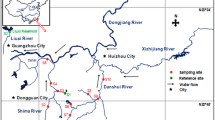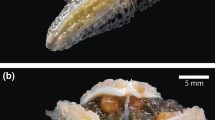Abstract.
The potential effects of exposure of fish to reproductive endocrine disruptors (REDs) is of major concern. This study reports on the effects of sewage effluent exposure on morphology of male mosquitofish (Gambusia a. holbrooki) in a tributary of the Hawksbury-Nepean River system in New South Wales, Australia. The growth and development of the modified anal fin (the gonopodium, GP) is a secondary sexual characteristic in males, forms under the influence of testosterone, and is critical for sperm transfer. The GP was reduced in length in males sampled downstream from a sewage treatment plant discharge point compared to GP fin length in males upstream or from other comparison sites. The reduction in size of this androgen-dependent structure suggests the presence of RED substances in the water. The presence or absence of spermatozeugmata (sperm packet) was not related to a reduction in GP length, which suggests spermatogenesis may not be reduced, but other measures of fertility remain to be evaluated. These results are discussed in the context of RED contaminants associated with sewage effluent.
Similar content being viewed by others
Author information
Authors and Affiliations
Additional information
Received: 20 July 1998/Accepted: 29 October 1998
Rights and permissions
About this article
Cite this article
Batty, J., Lim, R. Morphological and Reproductive Characteristics of Male Mosquitofish (Gambusia affinis holbrooki) Inhabiting Sewage-Contaminated Waters in New South Wales, Australia. Arch. Environ. Contam. Toxicol. 36, 301–307 (1999). https://doi.org/10.1007/s002449900475
Issue Date:
DOI: https://doi.org/10.1007/s002449900475




